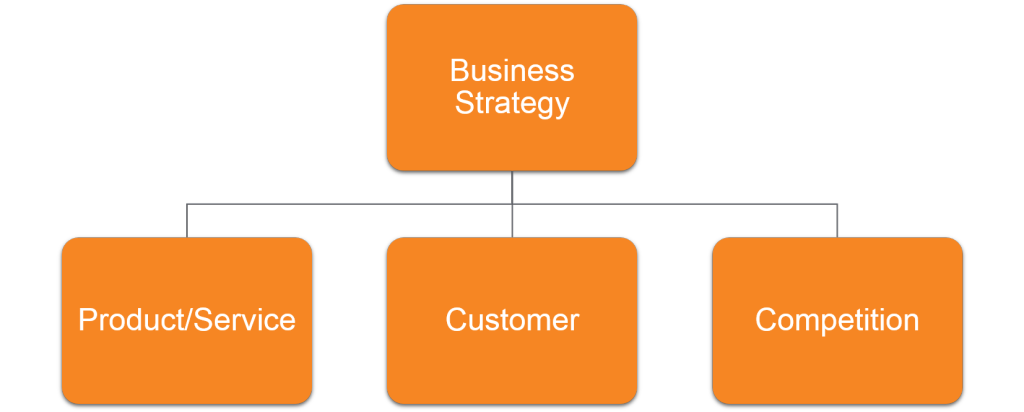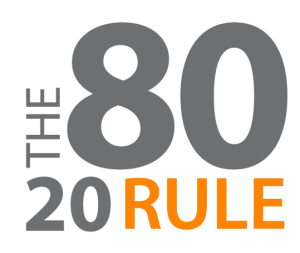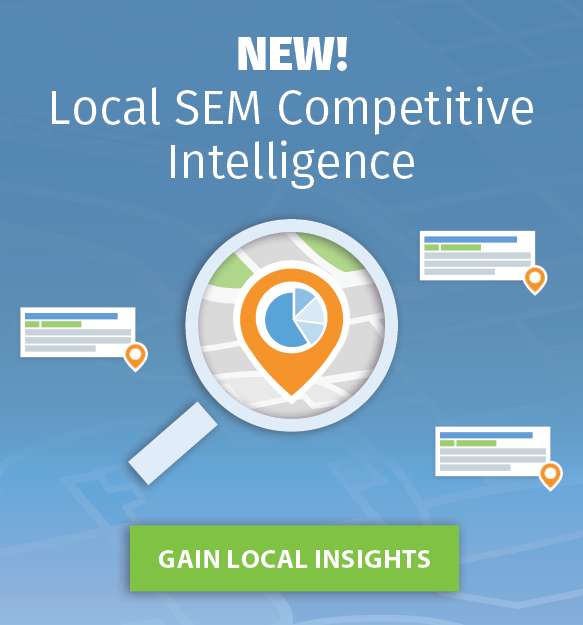A sound business strategy starts with understanding three key things:

So which one is the most important?
To be honest, they’re all very important, but here at iSpionage we wouldn’t say they’re all equally important.
You see, if you don’t understand your customers, your business isn’t going to do very well.
Let’s take a new t-shirt store as an example. In order to sell t-shirts, you need to know the following about your customers:
- What style of shirts the cool kids are wearing these days
- What cotton blends are the most popular
- Roughly how much people are willing to pay for different types of shirts
If you don’t understand how your customers feel about all of this, then you’re going to have trouble selling t-shirts because in order to sell shirts in the first place, you need to have someone to sell them to, and in order to have someone to sell them to, you need to understand the desires and interests of the people you’re attempting to sell to, i.e. your target market.
That’s why there’s no shortage of tools that help you understand your customers.
The list includes tools and services like SurveyMonkey, Qualaroo, HotJar, UserTesting.com and TypeForm. All of these sites, and the myriad of other customer insights tools available online help you to better understand your customers by identifying their interests and showing what they really think about your brand and competing brands.
This is pretty obvious, and we doubt that anyone’s going to argue that in order to run a business, you need to know as much as you possibly can about your target customers.
So this is pillar #1 for running a successful business.
Pillar #2: Understanding your product or service
Pillar #2 is also just as obvious—understanding your business and your business model.
Not only do you need to know as much as you can about your customers, but you also need to understand as much as you can about your business and the underlying business model.
Coming back to our t-shirt example, let’s assume that our aspiring entrepreneur starts an eCommerce store to sell his awesome t-shirts. This means that not only does he need to understand his customers, but he also needs to understand the ins and outs of running an eCommerce store in addition to learning as much as he can about screen printing, different styles of t-shirts blanks, how to fulfill orders, marketing for eCommerce, etc.
Our aspiring t-shirt entrepreneur clearly has a lot of homework to do.
He needs to study up on the latest t-shirt design trends while also learning as much as he can about generating orders, printing shirts, fulfilling orders, and making changes to an eCommerce website.
So now we know what pillar #2 is—understanding your business and the underlying business model. This holds true whether you run a PPC agency, are building an eCommerce store, or recently founded a SaaS startup. No matter what your business is, you need to understand how your type of business works in order to generate as much revenue and profit as possible.
But what about pillar #3? Have you ever given much thought about how important it is to keep up a close eye on your top competitors?
On the surface, this sounds super obvious, but we’re surprised how often we hear the following statement:
We don’t worry about our competitors that much. We just focus on what we do and believe that if we keep doing what we do well, then we’ll be all right.
There’s definitely some validity to that statement because you can pay too much attention to your competition, but you also have to realize that no business operates in a vacuum.
Why You Can’t Ignore Your Top Competitors
Even though you need to pay attention to creating a killer product and delivering the best possible customer service, you can’t simply ignore your competitors because your customers definitely won’t. They want to know things like:
- Who’s got the best deal TODAY?
- What brand has the better product or service?
- Which company offers the best overall value?
Every day prospective customers are asking these types of questions and are comparing your products against the competition before deciding which option to buy. That’s just the way it is.
Let’s come back to our t-shirt example for a minute to understand this better.
Before our entrepreneur friend begins selling t-shirts, he needs to study other online stores and even local brick and mortar stores to see what types of designs they have for sale, what quality t-shirts they’re using, and how much they’re selling the shirts for.
If most of his direct competitors are selling premium t-shirts for $24.95, he may want to undercut them with a high-quality shirt that’s not super, super premium and sell similar designs for $19.95. Or he may decide to go the other direction and sell even nicer shirts for $34.95 and up.
Either option is ok, depending on what the market can support (which goes back to point #1), but what wouldn’t work is selling a cheaper quality shirt for the exact same price. Once customers figure out that you’re doing that, they’ll be upset and place all future orders with your competition.
The point of all of this is that the t-shirt blanks you decide to use and the price you charge are two factors prospective customers will weigh before buying a t-shirt. If your customers can get a better shirt for less somewhere else, then you’re going to be in trouble.
Not to mention different sales and offers your competitors might be running that you’re not, which will eat into your sales over time.
No matter what industry your in, no one’s business exists in a vacuum, including yours. Everyone weighs one business or brand against another which means you desperately need a way to stand out and create compelling offers that convince customers to choose your brand over the competition, which also means you need to know as much as possible about competing companies so you can form a strategy that helps you to stand out, differentiate your brand, and sell more of your product or service.
So let’s come back to one of our original questions…
Which of these pillars should you pay attention to the most?
We’ll be honest with you. We’d like to say that your competitors are the most important since we’re in the competitive intelligence space, but that’s not actually the case.
You need to pay close attention to your competitors, but you need to pay even more attention to understanding your customers so you can fulfill their desires while also understanding your business so you’ll know how to generate more sales at a higher profit.
That’s why we tell people to use apply the 80/20 rule to these three pillars for a sound business strategy.

This means 80% of your time should be spent on your product or service and your customers with 20% of your time spent monitoring competitors.
It’s a simple rule we think helps with prioritizing between these three pillars without completely ignoring competitor insights which, though vitally important, shouldn’t be your business’s #1 priority.
And one thing to keep in mind is that competitive intelligence tools like iSpionage gather valuable competitor and market data for you so you can spend less time monitoring your competitors and industry while getting all of the valuable competitive intelligence information you need to make smarter strategic decisions.
At the end of the day, you won’t get anywhere without a killer product, and you won’t have a business if you don’t know how to reach customers while selling something they want.
But your business doesn’t exist by itself on an island, either. You have direct competitors like other online t-shirt stores, and you have indirect competitors, which includes every store that sell t-shirts of any kind (such as Target and Wal Mart).
The lesson is this: not only do you need to pay extra close attention to your customers and how to profitably operate your own business, but you also need to keep a close eye on your top competitors so your product or service continues to be competitive for years to come.
That’s why we decided to write a series of articles about how to convert competitor intelligence into actionable intel because we want you to be as prepared as possible to create offers that stand out and to differentiate your ad campaigns from the competition. We also want to teach you how to come up with a winning business strategy every 90 days while also using competitive intelligence to get quick tactical wins every two to four weeks.
Be sure to subscribe to our blog below so you won’t miss out on this in-depth competitive intelligence guide we’ll be publishing over the next couple of months.










